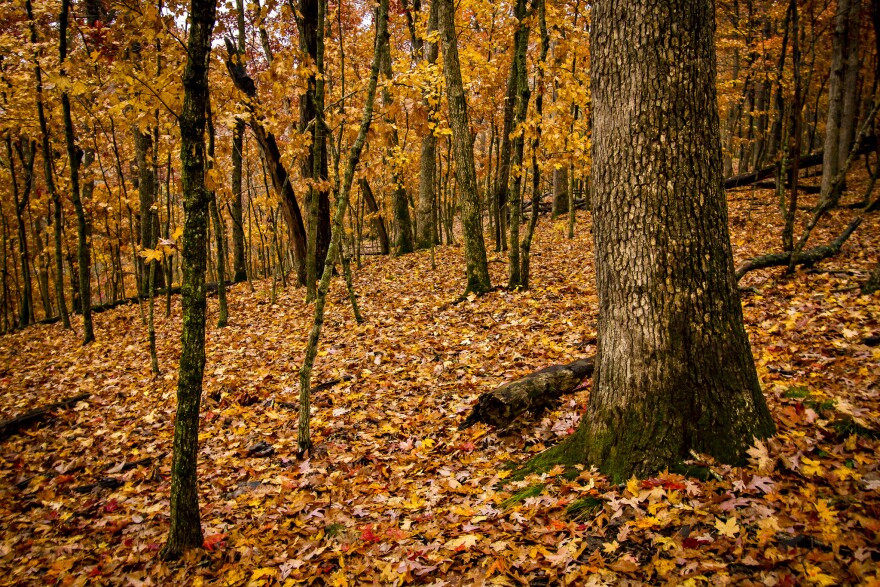This time of year, trees tend to attract more attention than usual. As the hours of sunlight shorten and temperatures fall, chemical changes in leaves bring out the bright yellows and reds across the canopies of Missouri’s many forests.
You’d be forgiven for thinking that spectacle and those forests, are timeless. But the woods as we know them today are a relatively modern development and Missouri’s historical woodlands looked considerably different. Understanding that history can help conservationists better manage our modern forests to encourage diversity and benefit wildlife.
In many of Missouri’s forests today, trees grow so densely that at times it’s difficult to stray from the gravel roads and walking paths already cut through them. Shrubs and saplings fill the understory, reaching up looking for light through the packed canopy. This clutter has developed for the most part over the last century or so, and it’s largely down to one crucial factor: fire.
U.S. Forest Service research forester Dan Dey explained, "Fire historically has a long presence in our landscapes here in Missouri and really throughout the U.S." Dey said, "Without fire, they become forests very quickly, in a matter of decades, so it’s very necessary."

In the early 1900s, though, fire represented an existential threat to people in the state. The extensive and unsustainable logging boom around the turn of the century, left the landscape prone to fires that were more sweeping and intense than the region was used to.
"Many state and federal agencies were established to control the wildfires that were viewed as very destructive," Dey said, adding, "And we became very good at putting them out and in fact maybe too good."
The openness that savannahs and woodlands offer allow more sunlight into the undergrowth, allowing for a diversity of plant life – from prairie plants that like full sun, to woodland species that prefer shade. The homogeneity of modern forests actually supports less flora and fauna. To understand what’s been lost, researchers like Brice Hanberry turn to the historical record.
"I looked at General Land Office surveys and these are historical tree surveys; they were conducted by the general land office in the 1800s," Hanberry said. The General Land Office, which would later become the Bureau of Land Management, was in charge of surveying and platting land in Missouri for westward expansion.
"They recorded two to four trees every half mile along section lines, and we can use those records as our first real surveys," Hanberry explained. Because the surveyors recorded the distance between trees, as well as the trees’ species and diameter, Hanberry and her colleagues could build out that data into broader estimates of tree density and other characteristics of pre-settlement tree-cover.

According to Hanberry, the GLO records indicated, "Many fewer trees than nowadays, maybe half or even a third the number of trees that we have nowadays." She added, "The trees were large in diameter because trees can live hundreds of years, but they don't nowadays live that long, they are usually cut before they die of natural causes."
The bulk of those older and subsequently wider trees were lost in the great logging boom of the early 1900s. Settlers describe woods spacious enough that they could see through and even drive their wagons into without much difficulty. Research like Hanberry and Dey’s has allowed foresters to refine their restoration efforts to reflect historical woodlands.
Dey said, "We realize now that because it’s been so long without fire that the forests have become somewhat resistant to being changed by fire, at least the kind of low-intensity dormant fires we use when we burn."
As a result, foresters have developed a combination of selective logging, herbicide use and burning to recreate tree communities which can then be maintained with fire. So far, these techniques have been applied largely throughout the Ozarks, and Dey recommended getting in touch with local forest offices if you’re interested in finding woodlands that resemble their ancestors.



